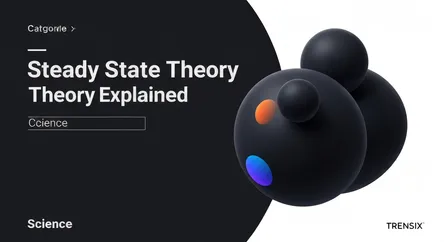Science
Steady State Theory Explained

Explore the Steady State Theory, a model suggesting an eternal, unchanging universe. Learn why this rival to the Big Bang theory fell out of favor.
What is it?
The Steady State Theory is a cosmological model developed in 1948 by Fred Hoyle, Thomas Gold, and Hermann Bondi. It proposes that although the universe is expanding, its overall properties and density remain constant over time. To maintain this constant density as galaxies move apart, the theory suggests that new matter is continuously created in the empty space between them. This idea is based on the 'perfect cosmological principle,' which asserts that the universe looks the same from any location and at any point in time. It stands in direct contrast to the Big Bang theory, which posits a definite beginning for the universe.
Why is it trending?
While no longer the mainstream view, the Steady State Theory remains a pivotal topic in the history of science. It often resurfaces in discussions about the scientific method, highlighting how theories are tested and replaced by ones that better fit observational evidence. The discovery of the cosmic microwave background (CMB) radiation in 1965 was a major blow to the theory, as it provided strong evidence for the hot, dense early universe predicted by the Big Bang model. Studying it provides context for why the Big Bang is the current consensus.
How does it affect people?
The debate between the Steady State and Big Bang theories drove cosmological research for decades, leading to major observational discoveries. While it doesn't impact daily life, this historical rivalry fundamentally shaped our modern understanding of the universe's origin and evolution. It illustrates the dynamic and self-correcting nature of science, where bold ideas are rigorously challenged by evidence. This process of inquiry helps humanity piece together the grand narrative of our cosmic existence, addressing fundamental questions about where everything came from.